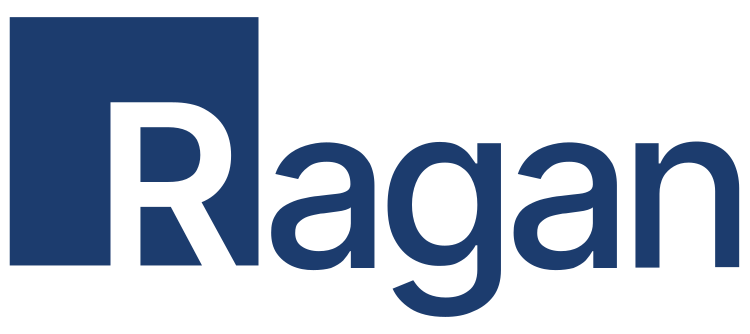How United Airline’s CEO comms lead with calm – internally and externally
From tariffs to internal issues, how the United comms team preps CEO Scott Kirby to succeed.

Despite their importance, not every CEO is an enthusiastic partner in communications.
But Scott Kirby, who’s served as head of United Airlines since May of 2020, serves as the primary voice for the company in times of crisis and times of calm.
“Scott is a fantastic CEO to work with,” said Nicole Carriere, United’s managing director of public relations, international and consumer during Ragan’s first-ever Executive Forum, where senior-level communicators gathered to discuss the most important issues facing the industry. . “He enjoys doing media, which I know is not the case for every CEO, and he trusts (Executive Vice President of Communications and Advertising Josh Earnest) pretty implicitly with the opportunities to selectively put him out there.”
Carriere shared how United chooses which opportunities to make Kirby available for and how to ensure his appearances serve the company’s overall story.
“Our leadership team is absolutely phenomenal,” she said. “They are very supportive of our efforts, and we’ve got that level of trust. So when we come to them with some stickier things, it makes those conversations easier.”
Taking advantage of their media appeal
Unlike other companies, United never has to fight to get airtime for their CEO.
“We can get (our CEO) on any morning show we want,” Carriere bragged. But with great power comes great responsibility. Carriere and her team always want to make sure that when Kirby is in the spotlight, it’s because he has a message that’s worth hearing. Knowing when to say no became an important aspect of the company’s media strategy during the COVID-19 pandemic, when the airline industry was in turmoil amid mask and vaccine requirements.
“Unless we have something uniquely United that’s going to drive our strategy, we would decline,” Carriere recalled.
While the pandemic has passed, wisely choosing media opportunities is still a critical part of Carriere’s role, on which she works loosely with Kirby.
For instance, last week United had a scheduled “United Next” event in San Francisco, which she lightly called a “pep rally” highlighting its work at the airport, new aircraft, routes and other news relevant to the city. These events are important for both employees, who get face time with the CEO, and the local community, which gets to see United’s efforts firsthand. But of course, the United team knew that if they had media availability, they were also going to get sticky questions about tariffs.
United debated making the event just for employees, but in the end, also opened it to local media.
“We had some good news to lean into that he could pivot out of,” Carriere said. “Were there some quotes about tariffs in there? Of course, we knew we were going to get the question. We prepared for it, and he successfully got the answer out there and worked back around it.”
One key for the PR strategy is building on Kirby’s own personal preference toward transparency and openness – while also helping him find the more circumspect lines a CEO must sometimes walk.
That’s become especially important as CEOs continue to face those tough questions over tariffs. United will face a major test next week when it releases earnings. But Carriere said their overall strategy is to focus on the long-term vision of the organization.
“It’s a moment,” Carriere said. “It’s a very challenging moment, and we’ve got to set ourselves up for success. But how are we planning now for two years from now, three years from now, and what does that look like? So I would expect that as we think about our position in this conversation, obviously we’ll remark on the near-term impacts as we need to but continue to be focused on our long-term vision.”
‘Straight from Scott’
Employee communications are also an important overall part of United’s strategy. Another COVID-era vestige that remains to this day is “Straight from Scott,” a lightly produced video with the CEO that’s designed to seem off-the-cuff, though it’s carefully orchestrated by the comms team.
“They’ll do one next week around earnings, and we’ve kept it an employee-only video,” Carriere said. “We’ve cut some little piece of it and given it to media, but I don’t want to jinx it, so I’ll knock (on wood)… It doesn’t really leak.”
Despite the lack of leaks, most of the videos are still reviewed by the external comms team just in case and to ensure internal and external messages remain aligned.
Employees also play an important role after the release of an earnings report in a production called “Earnings Live,” where company leaders take real questions from workers. The comms team preps leaders on questions and topics they think are likely to come up, but the questions are not reviewed in advance. So far, the strategy has worked.
“I don’t think there’s anything that any of our attendees have said in that forum that would feel super risky,” Carriere said. “I think they know the boundaries to stay in while still being transparent and approachable, without stepping over that line of divulging something proprietary.”
Overall, Carriere said the team’s focus is on empowering leadership to make good decisions in the spotlight, whether the audience is internal, external or both.
“Scott’s personal philosophy, which helps us, is about transparency. And he has some opinions about things but it’s great, and he’s not shy about sharing them.”
Allison Carter is editorial director of PR Daily and Ragan.com. Follow her on LinkedIn.







